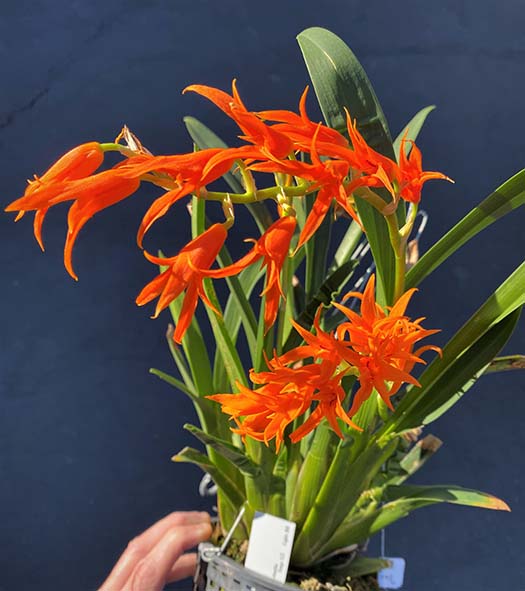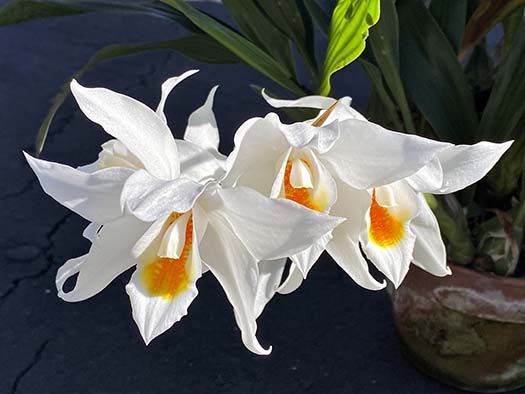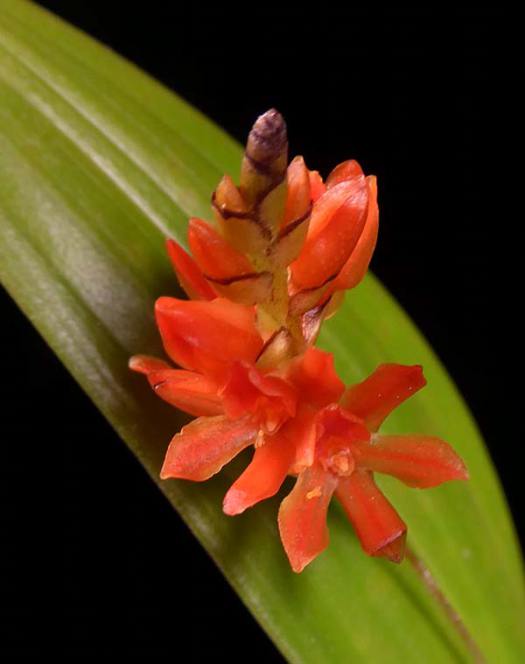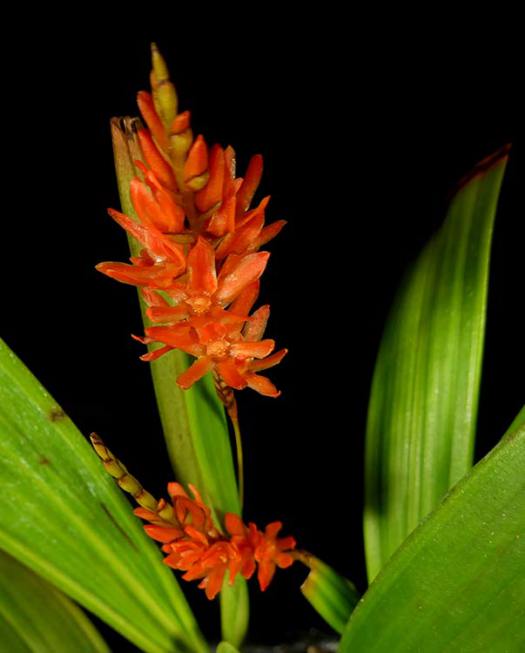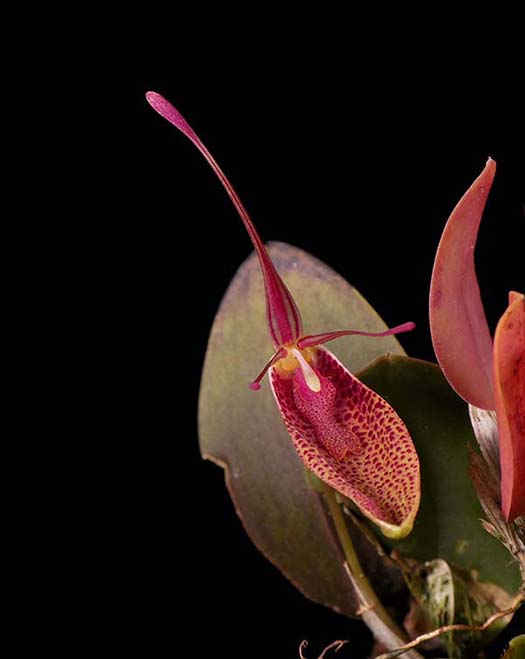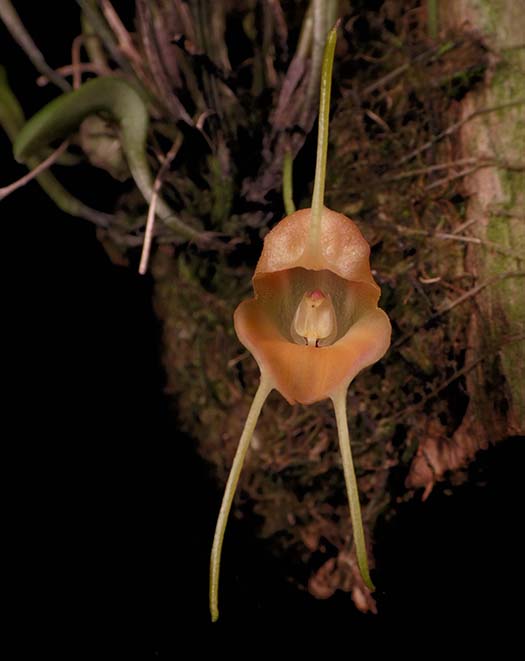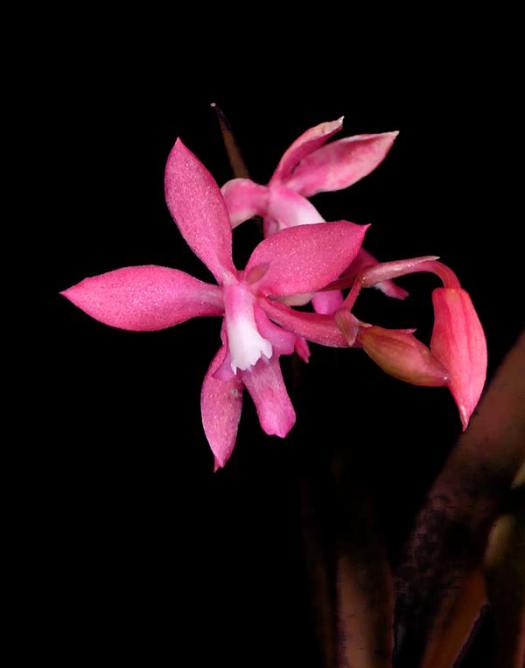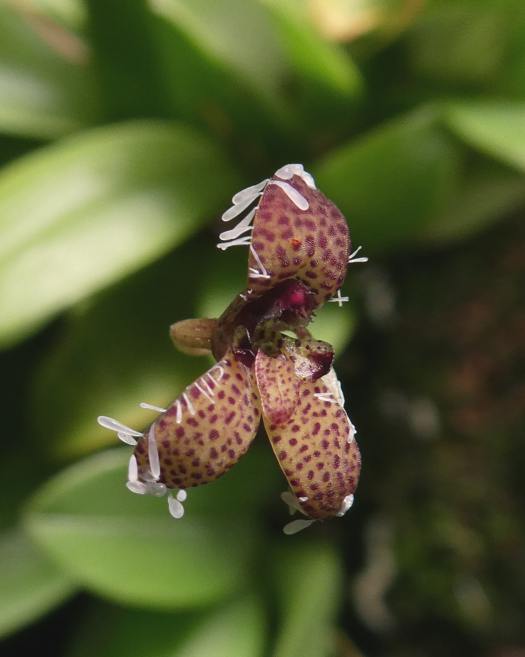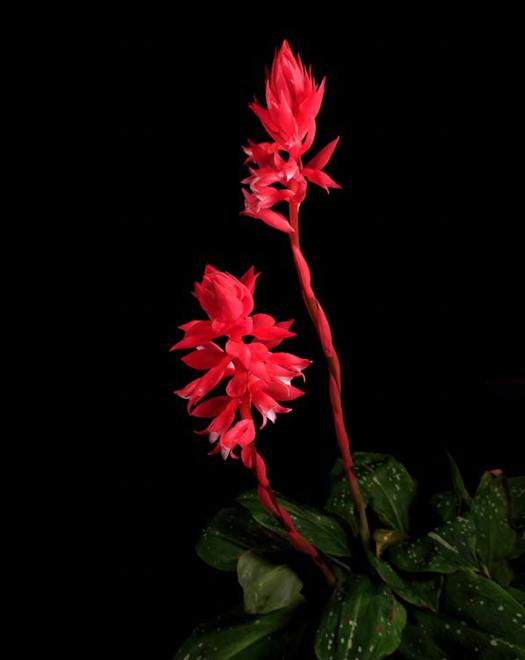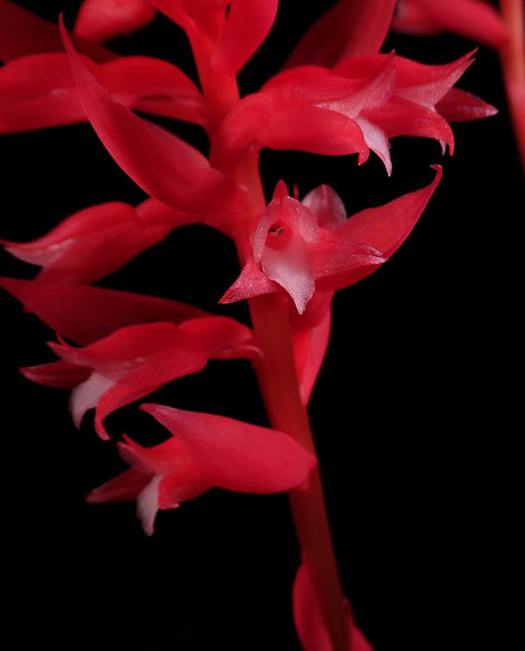February 2021
From Lynn Wiand:All orchids grown outdoors, coastal southern California |
|

Pleurothallis leptotifoliaFrom Brazil. Two different plants. The one above, lighter in color and fewer flowers. The one at right, better color and more flowers each time. |
|
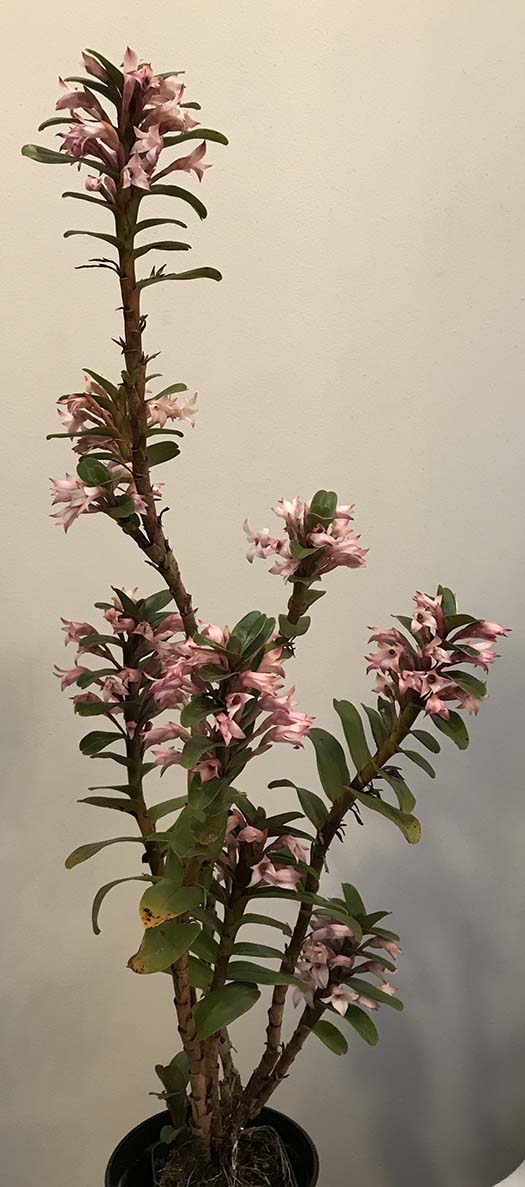 Maxillaria scalariformisFrom Panama. In moss in a 4 inch pot, sitting in a saucer. Blooms 3-4 times a year and reblooms on the same canes as they grow taller. |
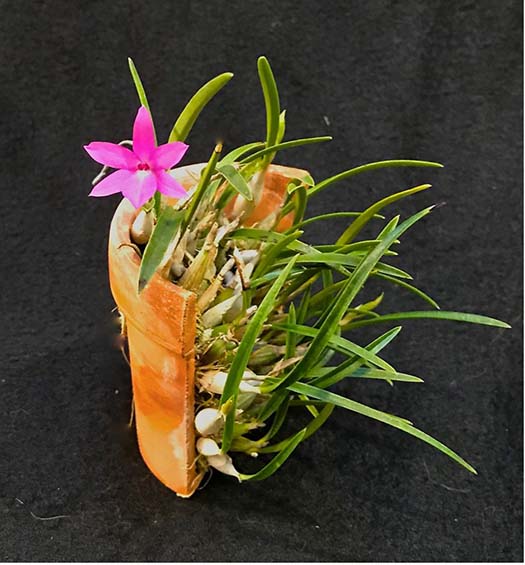
Sophronitella (Isabelia) violaceaFrom Brazil. That is a 1-inch flower. |
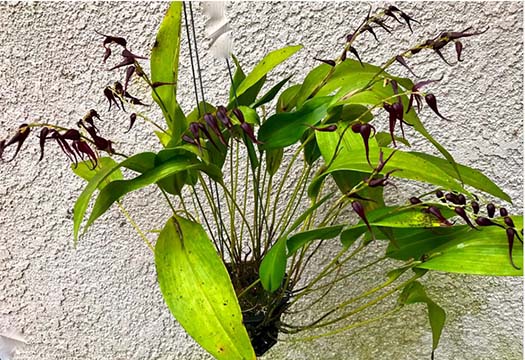 |
Pleurothallis phalangiferaFrom Colombia |
From Scott McGregor:All orchids grown outdoors, coastal southern California |
|
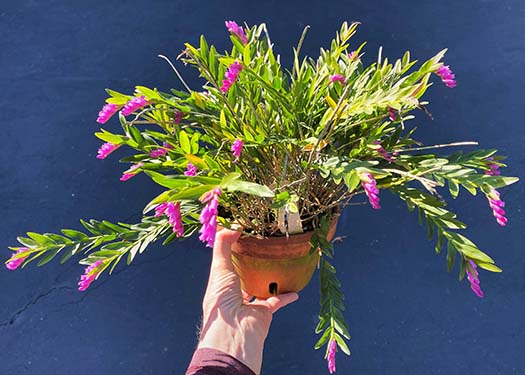
Isochilus sp.Unidentified Isochilus species, labelled ‘OZ’ from Andy Phillips, possibly I. major. Also see pic of I. major ‘Santa Barbara’ (below); the flowers seem similar but note that the terminal leaves have the same coloration as the flowers, so not sure they are the same species. These species from the Columbia Andes do well if you can keep them cool and moist in our hot summers. |
|
 |
Isochilus major 'Santa Barbara' |
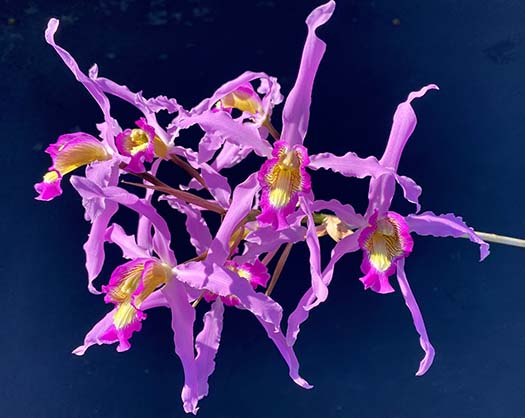
Laelia superbiensA big plant with a ball of flowers on a long spike—brightens up the growing area on a sunny day. |
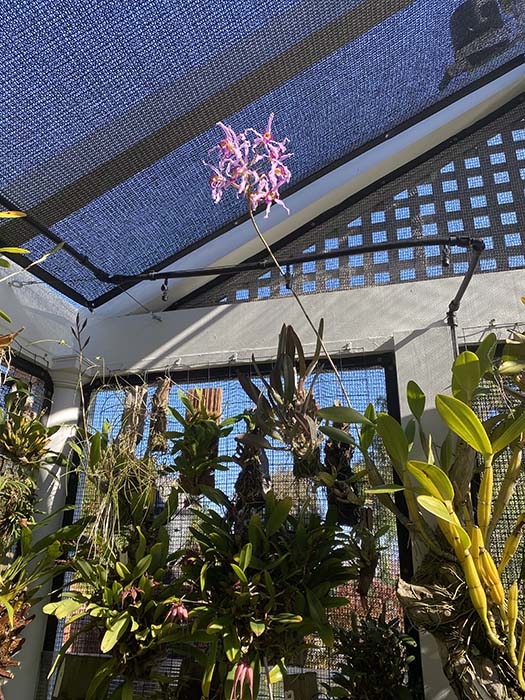 |

Leptotes bohnkianaSmaller than most other Leptotes species and a bit of a shy bloomer for me, perhaps because it might prefer more warmth than it gets outdoors. |
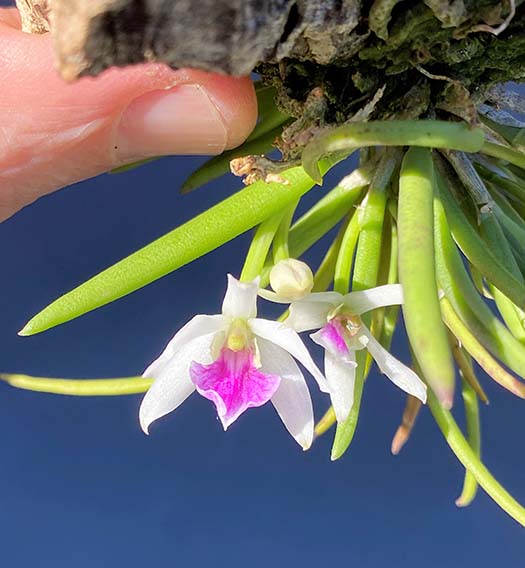 |
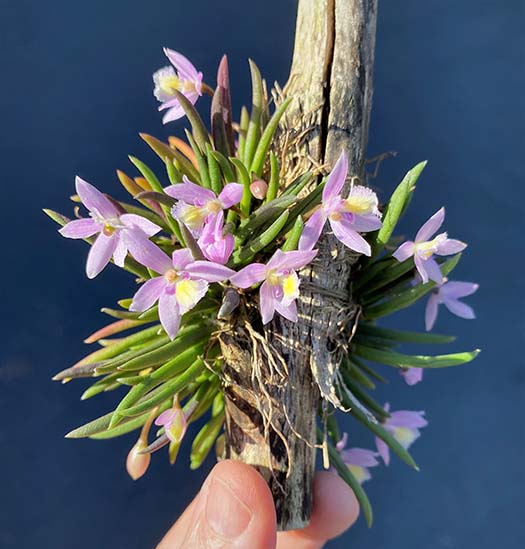
Leptotes pauloensisOriginally acquired in 2012 as L. harryphillipsii, later determined to be L. pauloensis (sorry Harry!). A cute outdoor mini and reliable Spring bloomer, grows best mounted and bright. |

Masdevallia floribundaNot as pretty as some, but certainly true to its name with an abundant flush of flowers. |
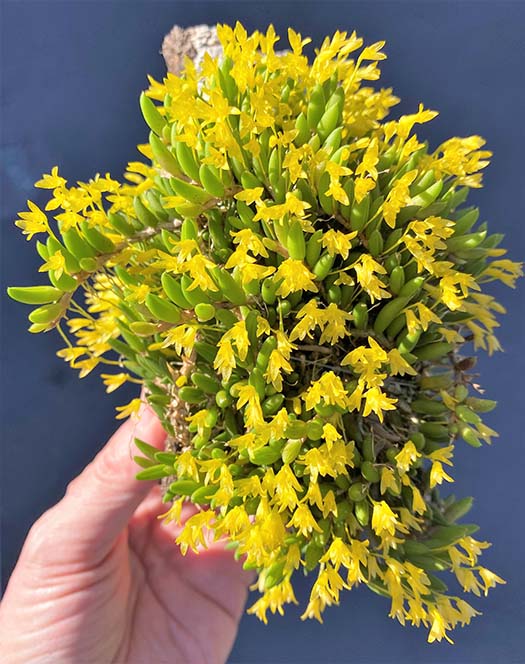
Pleurothallis leptotifoliaPleurothallis leptotifolia doesn’t have very large flowers but sure has a lot of them! Grow them next to your Leptotes species, which the plant resembles. |
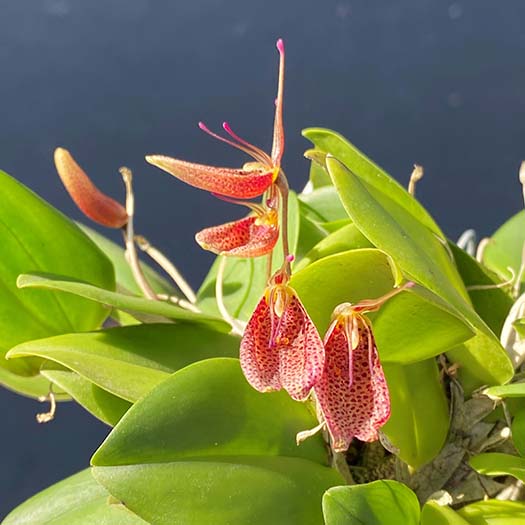
Restrepia contortaA cute Restrepia from Colombia. |
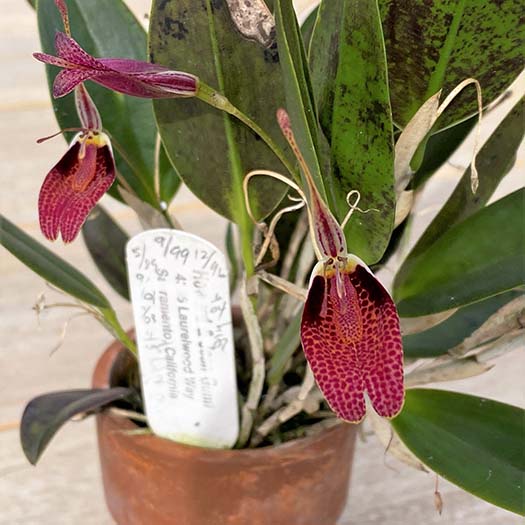
Restrepia sanguineaHave you seen the Patek-Phillipe watch ads where they say “you don’t actually own one, you just look after it for the next generation”? Here’s a deep red Restrepia—on a plant that must have been in cultivation for at least three decades, only with me since 2014. It still has the original Howard and Joan Gunn plant tag and a bloom record from May of 1989. |

Restrepia trichoglossa spotted yellow 'Parsons'This bright yellow species comes in both a striped and spotted form and this is the latter. |
From Roberta Fox:
|
|
Outside in the Back Yard: |
|
Dendrochilum coccineumLarge flowers for the genus. Each year I get more spikes, but they tend to open only about two at a time. Perhaps eventually I'll get a flush bloom but hasn't happened yet. |
|
 Restrepia elegansSunset colors. It produces new flowers over a period of about two months. |
|
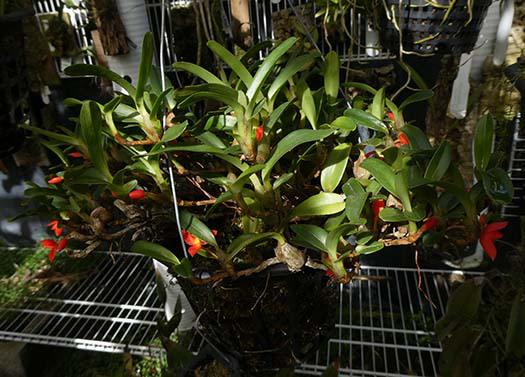 Maxillaria sophronitisProduces flowers on and off most of the time, with two or three flush blooms a year. On dark winter days, the color of these half-inch flowers really pops. The plant is a rambler - it climbed out of a 4 inch basket so I moved it to a 6 inch one about a year ago. Clearly it is climbing out of that one too. I'll just let it ramble. |
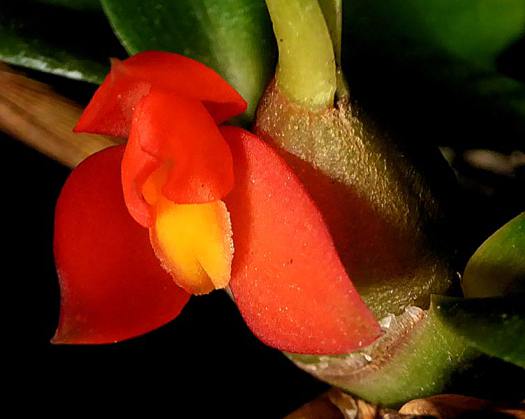 |
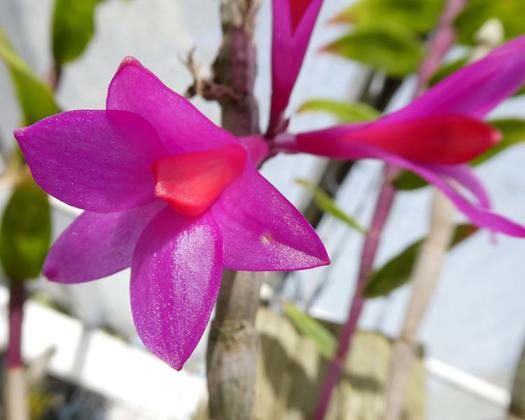 Dendrobium glomeratum (sulawesiense)The species has a reputation as a warm grower. But Andy Phillips found that it does fine in an unheated shade house, and it does fine on my patio. The saturated colors of the long-lasting flowers, with the contrast of the bright orange lip, almost glow. It bloomed in June, and again at the end of December. |
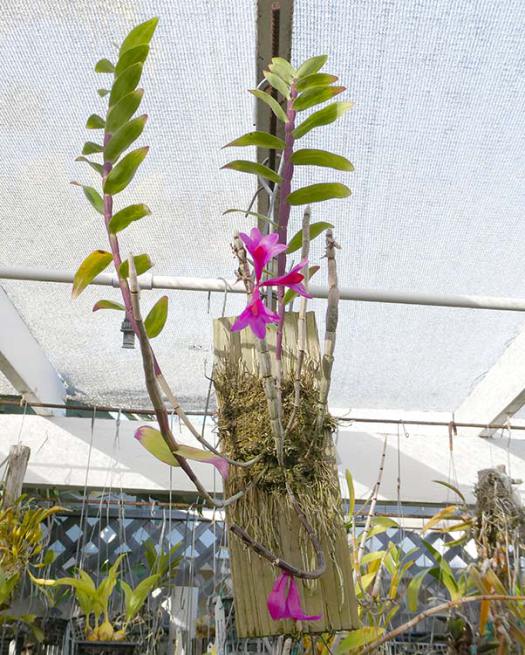 |
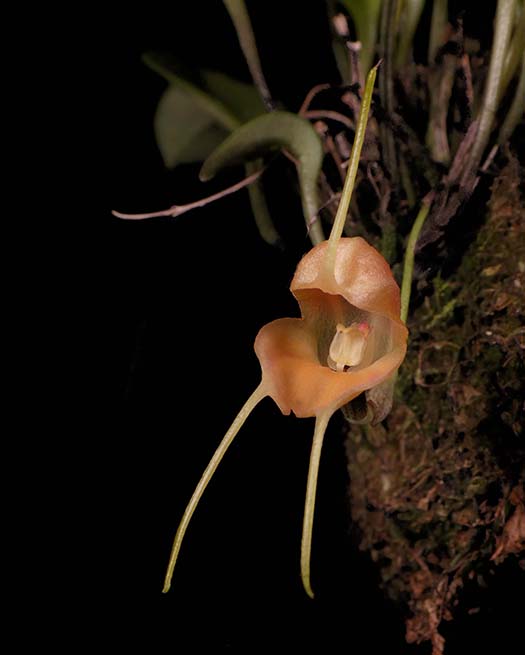 |
|
Masdevallia prodigiosaNative to Peru. Color isn't dramatic, but form is interesting. This is as open as it gets. |
|
Cochlioda roseaFlowers are only about 3/4 inch, but really cute, and the plant is also small - lots of room in a 4 inch basket. |
|
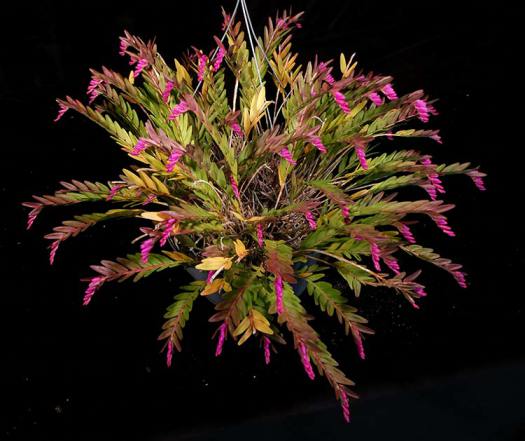 Isochilus sp.This plant has the same label as Scott's, Isochilus sp. 'OZ' (Colombia) . But mine has terminal leaves with a reddish tint, which is characteristic of Iso. major. So maybe that's what it is. |
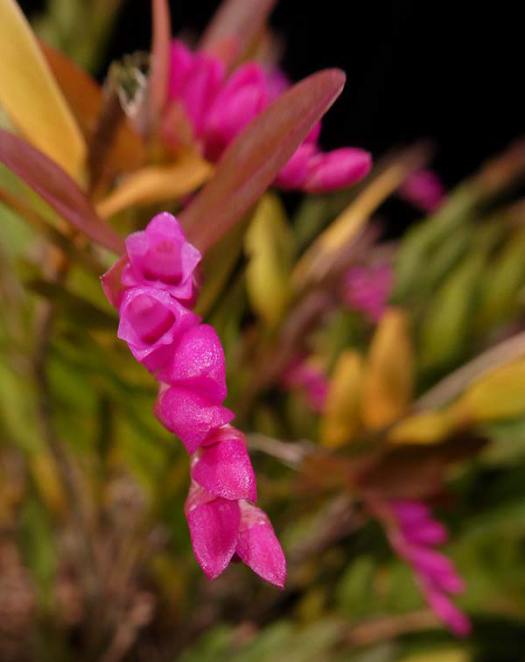 |
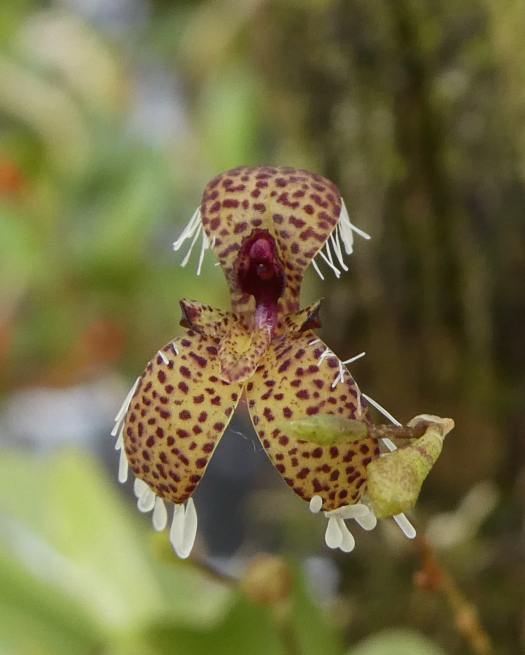 |
|
Pleurothallis ornataThe little fringes wave in the slightest breeze - certainly a "come hither" for polinators. I'm still waiting for a flower that perfectly prsents itself to show them off to perfection. There will be more chances... it blooms sequentially on each infloresecence, and there are many of them. Maybe eventually I'll get lucky. |
|
 1.jpg)
Oncidium sotoanumMany of us have this plant labeled "Onc. ornithorhynchum". When did the name change? The answer is on Jay Pfahl's website orchidspecies.com: "This orchid for most of the last 200 years has been known as Oncidium ornithorhynchum which with recent studies has been found to describe a yellow flowered species from Andean South America known commonly as Oncidium pyramidale. A new name was needed for the pink, highly fragrant flowers that occur in Central America hence this new name Oncidium sotoanum for the species in the photos above. " The new name was published in 2010. |
 2.jpg) |
In the greenhouse... |
|
Stenorrhynchos speciosumThis terrestrial species is native to a very wide range, from southern Mexido to Peru, and throughout the Caribbean. In the absence of a greenhouse, it's an excellent house plant - it doesn't need a lot of light, and the velvety, spotted foliage is very attractive when it's not in bloom. It loses old leaves after blooming but new rosettes grow at the same time so it's never bare. The flowers are light red with pale pink to white lip, but the intense red come from the bracts that surround the flowers. It could be considered the poinsettia of the orchid world. |
|
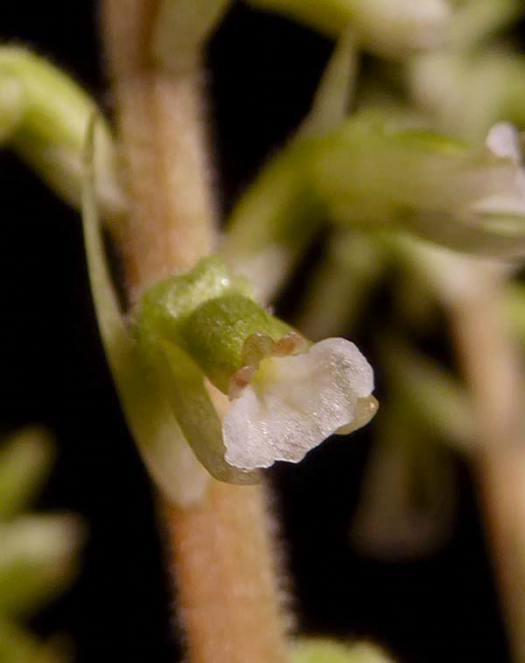 |
 |
Cyclopogon lindleyanusAnother one that can be grown as a house plant, with attractive foliage. |
|
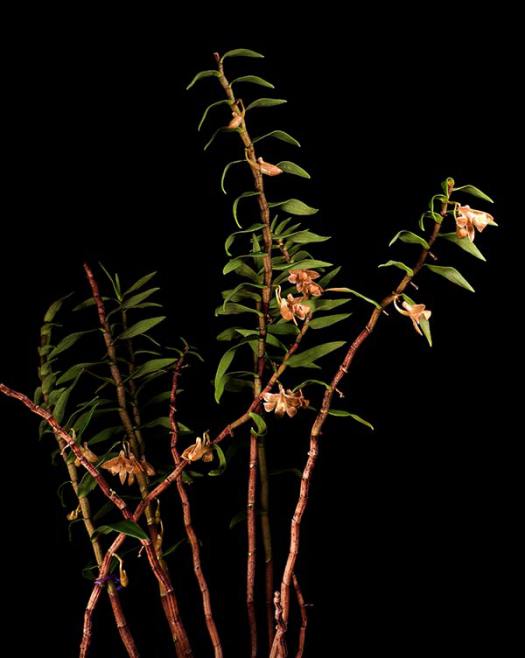 |
|
Dendrobium nemoraleCute little flowers with interesting tesselation and curly petals. |
|
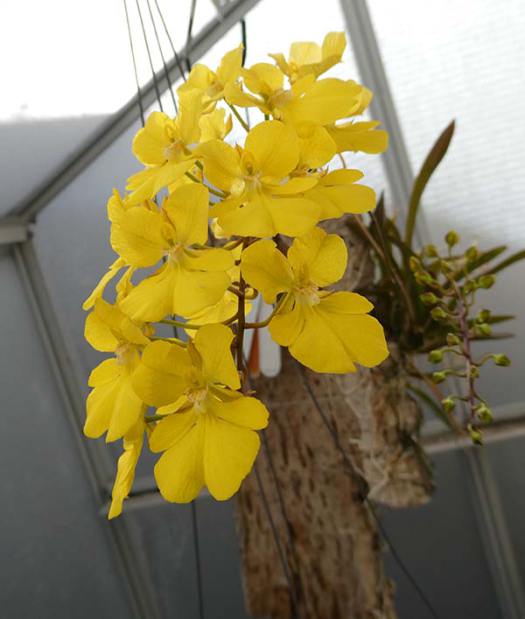 |
 |
Zelenkoa onusta (Oncidium onustum)From a humid coastal area on the western coast of Ecuador and Peru that gets sparse rainfal, this species can even be found growing on cactus. It gets a lot more water at my house than it would in the wild, but seems to not object. It does grow mounted on bare cork, so it dries out very quickly after watering. Flowers are very long lasting, and it blooms at least twice a year. |
|
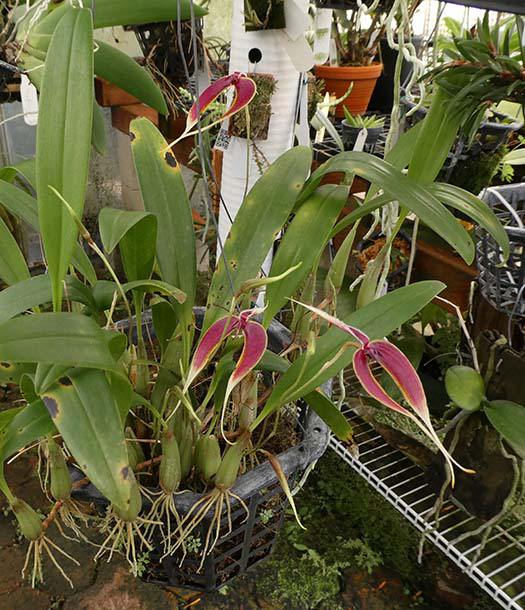 |
 |
Bulbophyllum maxillare (blumei, masdevalliaceum)This is a very vigoroous plant that does not want to stay confined to its basket.Note all the buds that have yet to open. Flowers are not long lived, but there are lots of them blooming in sequence. I have seen it sold under all three of these names... if they seem to look alike, it is because they are synonyms. |
|
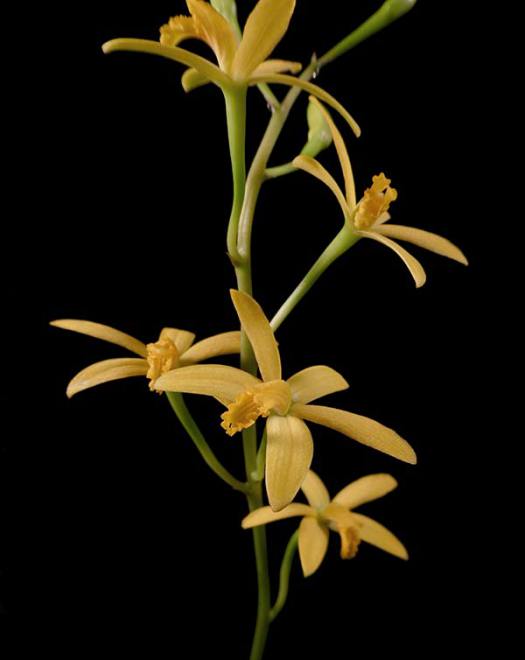 |
Laelia flava (Cattleya crispata)I have tried to grow this outside, but it has done much better in the greenhouse. So that's where it lives. It comes from the same part of southeastern Brazil as many other rupiculous Laelias, so it theoretically should do fine outside. |

